Abstract
The survival of enteric viruses was studied in the vicinity of Fairbanks, Alaska at selected stations along a 317-km section of the Tanana River. This section was located downstream from all known domestic wastewater sources and was effectively sealed by a total ice cover. The mean flow time through the region was 7.1 days, during which initial viral population showed a relative survival rate of 34%. The tracing of native viruses at such great distances in the complete absence of other point and nonpoint viral sources has not been previously reported. Of the two methods of virus concentration used, viral recoveries from the disk adsorption virus elution procedure were far greater than those achieved with the Aquella system employed at that time. The fact the ratio of enteric viruses to fecal indicator bacteria was not constant clearly inferred that these bacteria were not an effectual measure of virus concentration. The persistence of fecal coliforms and fecal streptococci, however, attested to the microbiological health risk involved.
Full text
PDF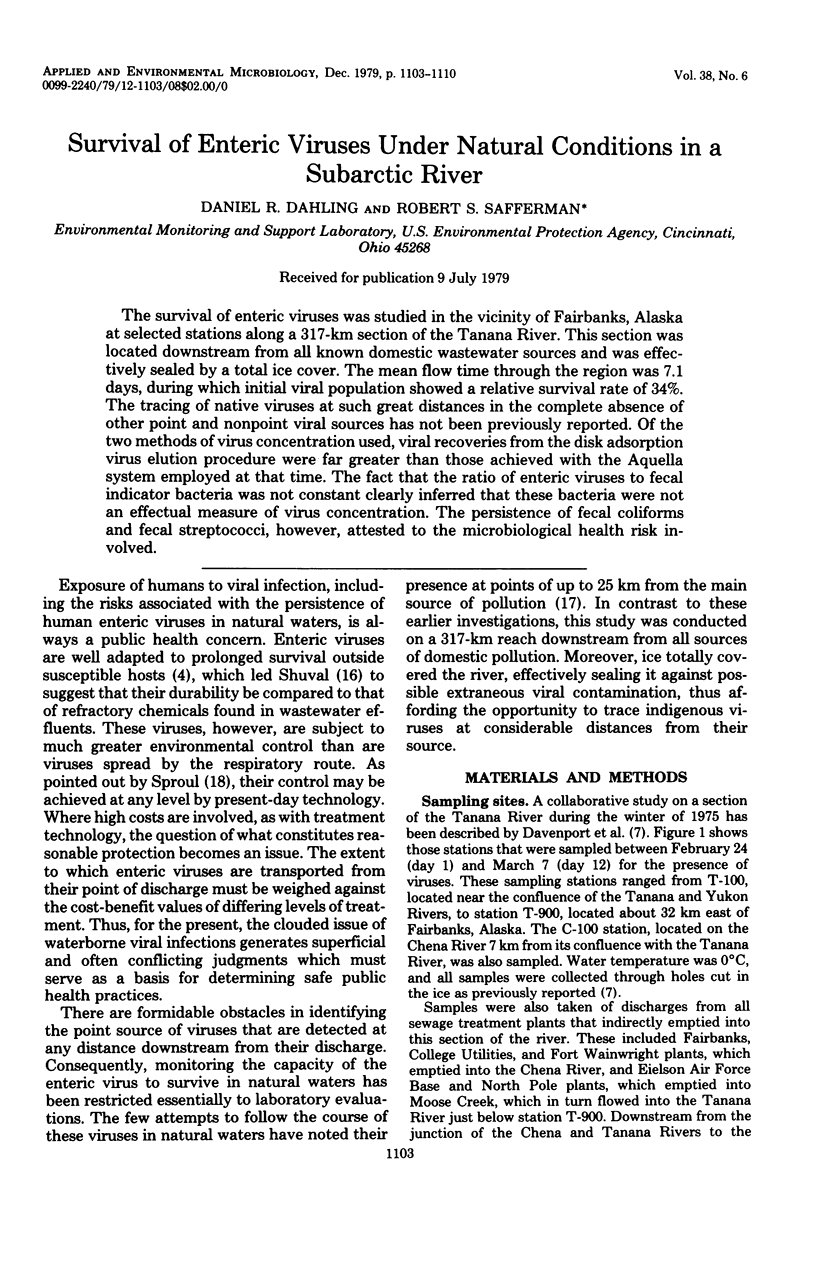
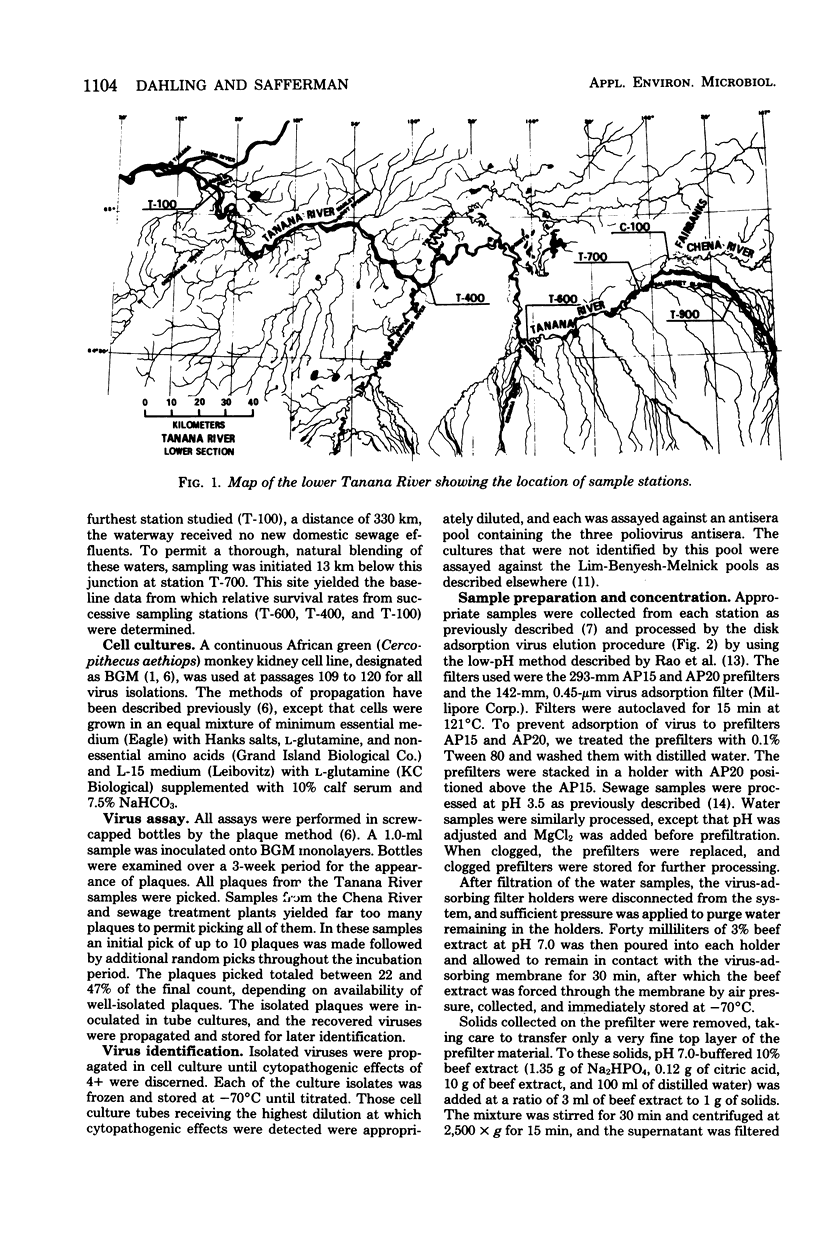
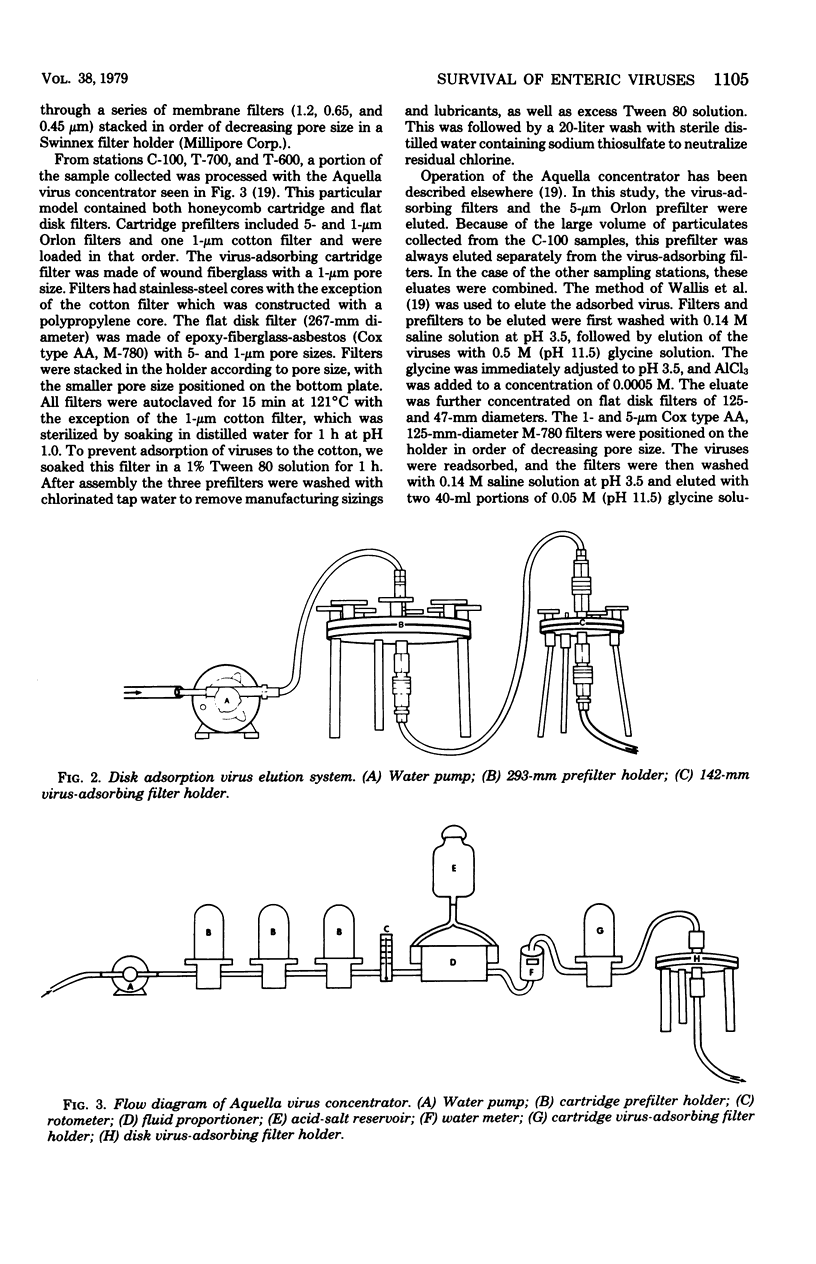
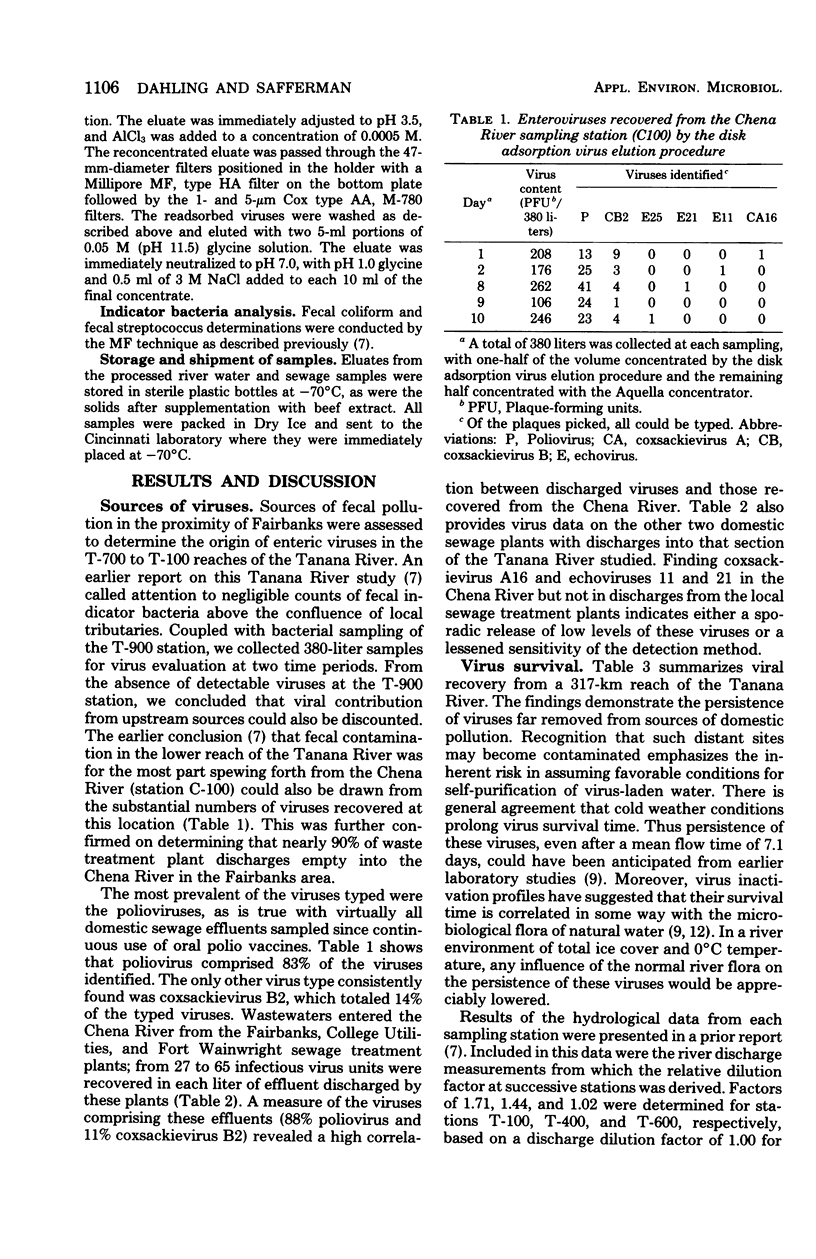
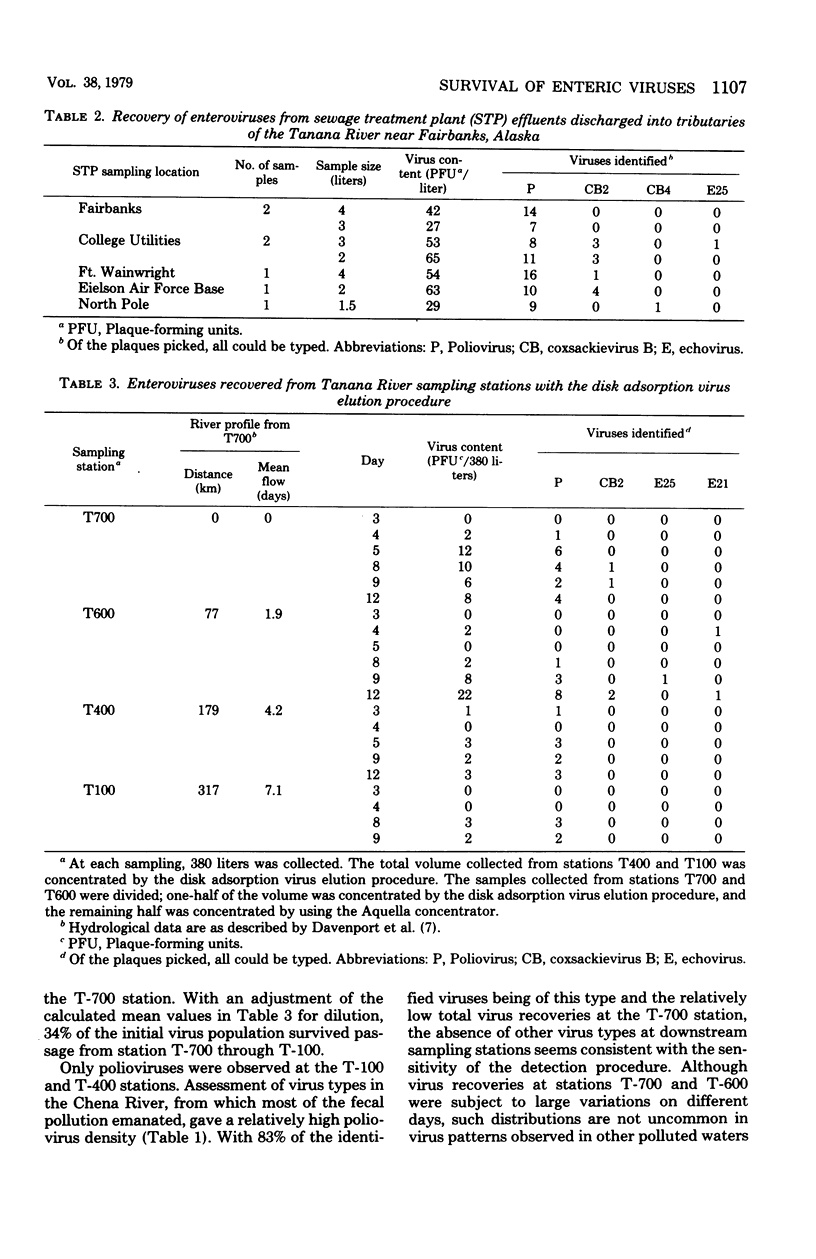
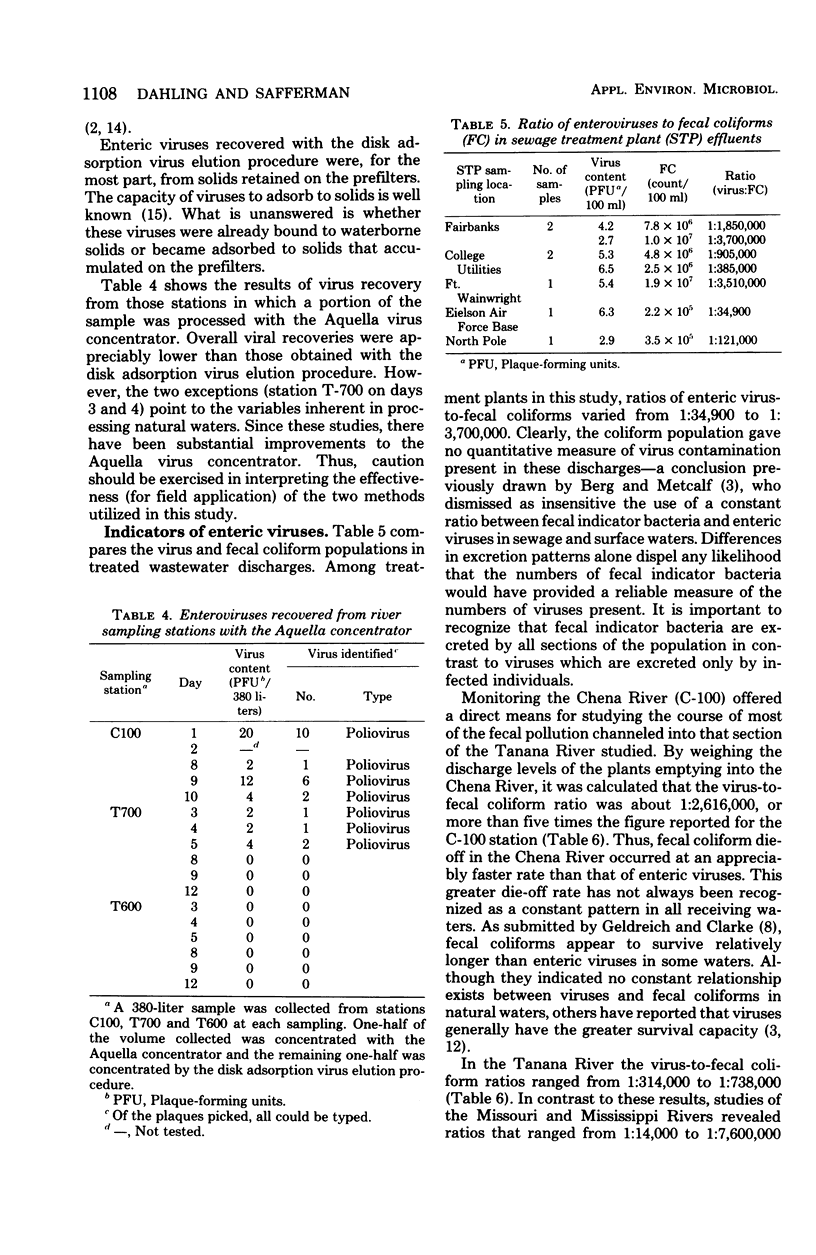
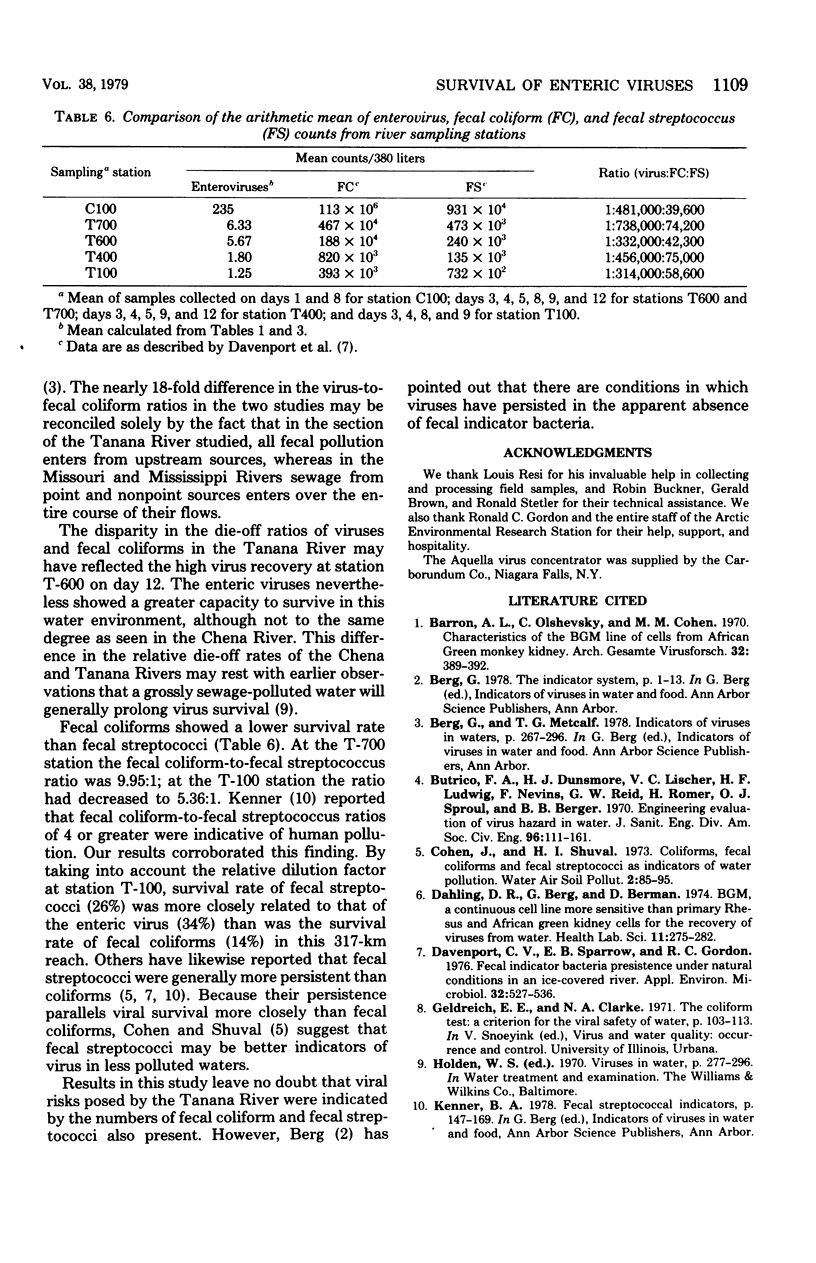
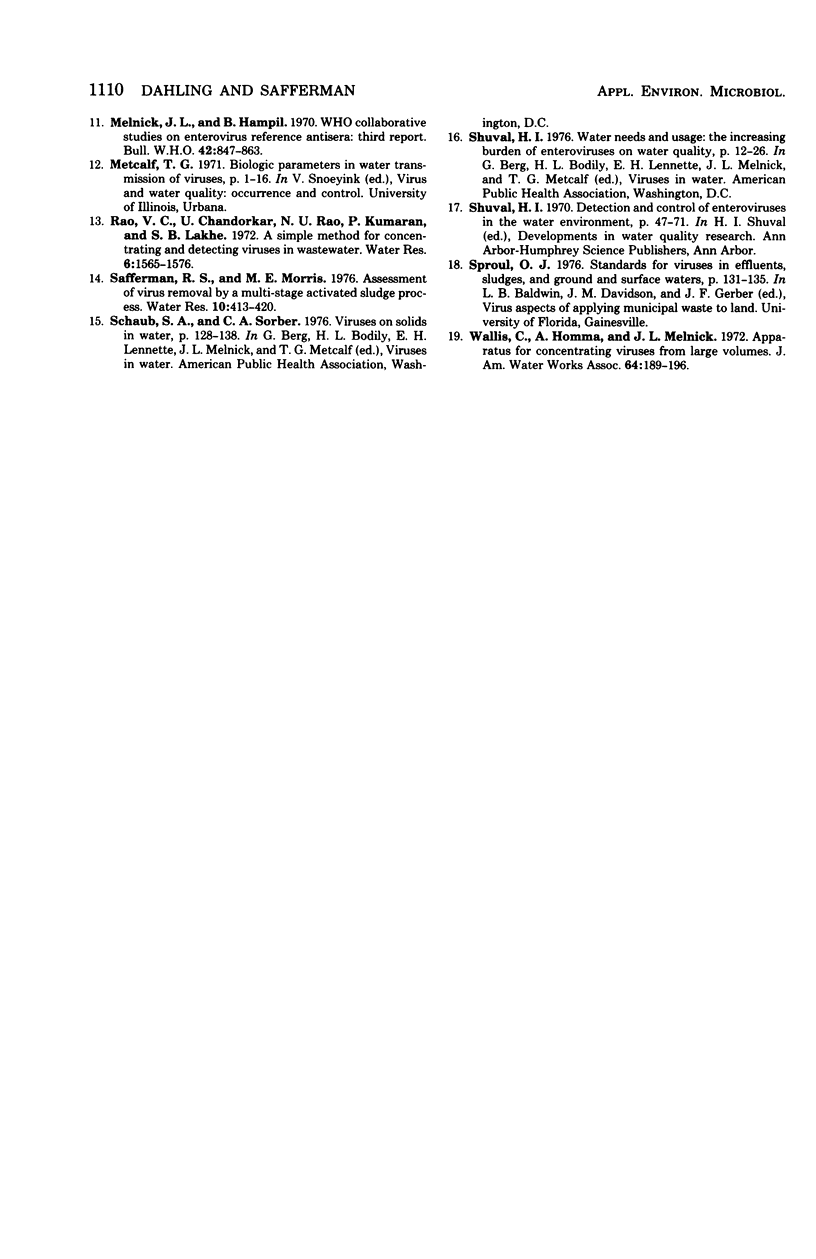
Selected References
These references are in PubMed. This may not be the complete list of references from this article.
- Barron A. L., Olshevsky C., Cohen M. M. Characteristics of the BGM line of cells from African green monkey kidney. Brief report. Arch Gesamte Virusforsch. 1970;32(4):389–392. doi: 10.1007/BF01250067. [DOI] [PubMed] [Google Scholar]
- Dahling D. R., Berg G., Berman D. BGM, a continuous cell line more sensitive than primary rhesus and African green kidney cells for the recovery of viruses from water. Health Lab Sci. 1974 Oct;11(4):275–282. [PubMed] [Google Scholar]
- Davenport C. V., Sparrow E. B., Gordon R. C. Fecal indicator bacteria persistence under natural conditions in an ice-covered river. Appl Environ Microbiol. 1976 Oct;32(4):527–536. doi: 10.1128/aem.32.4.527-536.1976. [DOI] [PMC free article] [PubMed] [Google Scholar]
- Melnick J. L., Hampil B. WHO collaborative studies on enterovirus reference antisera. Third report. Bull World Health Organ. 1970;42(6):847–863. [PMC free article] [PubMed] [Google Scholar]


